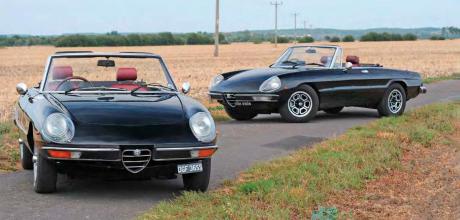1977 Alfa Romeo Spider 2000 Veloce Series 105 - twins, separated at birth, now reunited
Twin Alfa Spiders with consecutive chassis numbers – 3052 and 3053 – are reunited, 45 years after they came off the production line.
Story by Chris Rees
Images by Michael Ward
FRIENDS REUNITED ALFA SPIDER TWINS
It always makes for a great story: twins separated at birth, reunited after decades, an emotional encounter for all concerned. Turns out that this quintessentially human story has a parallel in the world of Alfa Romeo. For here are two Spiders that are so close to being identical that they have consecutive chassis numbers. Today, Auto Italia is adopting the role of fairy godmother by reuniting these twins fully 45 years after they were born.
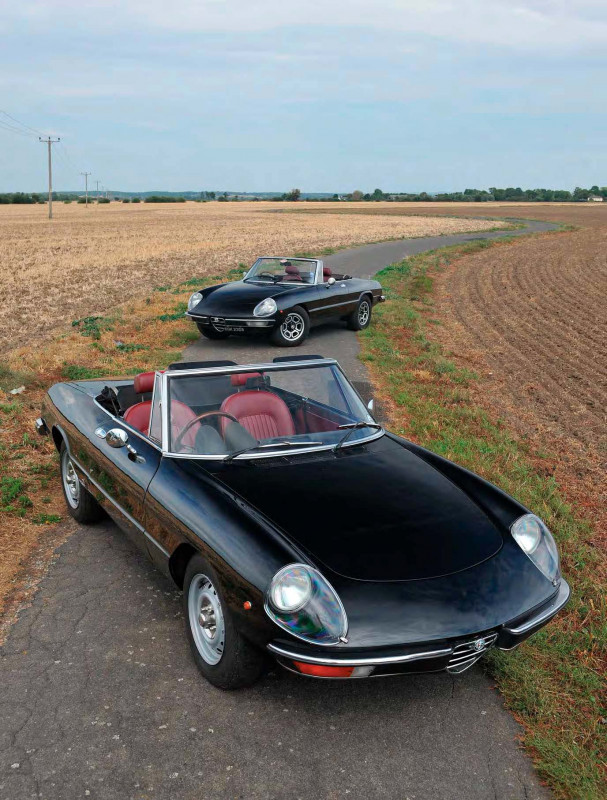
The story starts with a thread on the Alfa 105 Facebook page concerning the dying days of right-hand drive Alfa Spider production. It’s well known that the Arese factory produced the last right-hand drive Spider in 1977. During my research for the book Original Alfa Romeo Spider, I discovered that the 1977 RHD chassis number range was 2472901 to 2473095, which would suggest that 195 RHD Spiders were made that year. However, Alfa Romeo’s haphazard record keeping at the time means that not all chassis in its numbered sequences were in fact built, and it’s possible that the 1977 RHD sequence is one of those unreliable ones.

No chassis number higher than 3053 has yet been found, so Jon’s could be the youngest surviving RHD factory Spider
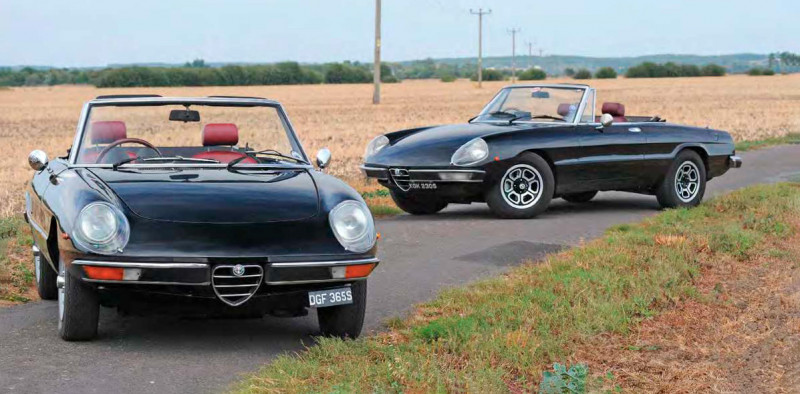
Some more RHD trivia. Although RHD production came to a close in 1977, the very last RHD Spider was actually imported into the UK in April 1978, and the model continued to appear in official UK price lists until September 1978, while stocks were used up. And the very last right-hook cars were actually made in 1978 in Johannesburg, South Africa, as part of a batch of around 300 cars produced between 1975 and 1978. Of course, right-hand drive would continue to be available as an aftermarket conversion (via Bell & Colvill and others) but that’s another story. Anyhow, back to that internet thread. Spider owner Jon Court was interested to know who had the RHD Spider with the highest chassis number in the UK.
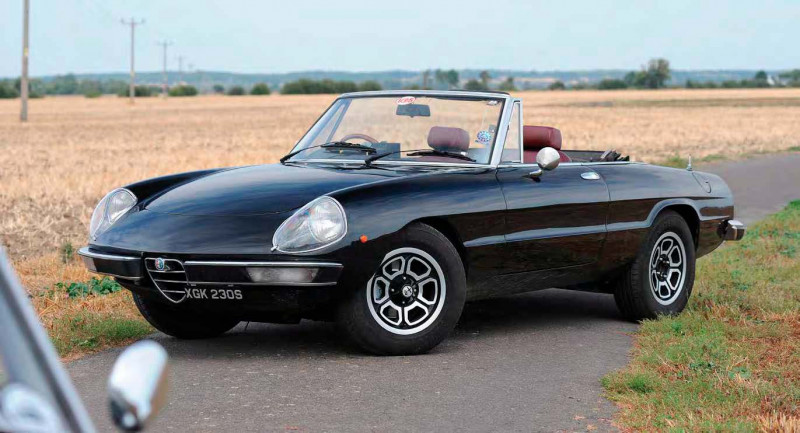
Was the very last example chassis 3095? If so, the whereabouts of that car are not unknown. Jon wondered whether anyone had a later one than his own, which is chassis number 3053. According to the certificate that Jon received from the Centro Documentazione Museo Alfa Romeo, his car was manufactured on 30 June 1977 and we can say for sure that it’s one of the last 50 RHD cars made. So far, no chassis number higher than 3053 has yet been found, so Jon’s could very well be the youngest surviving factory RHD Spider. Unless, of course, any readers know different…
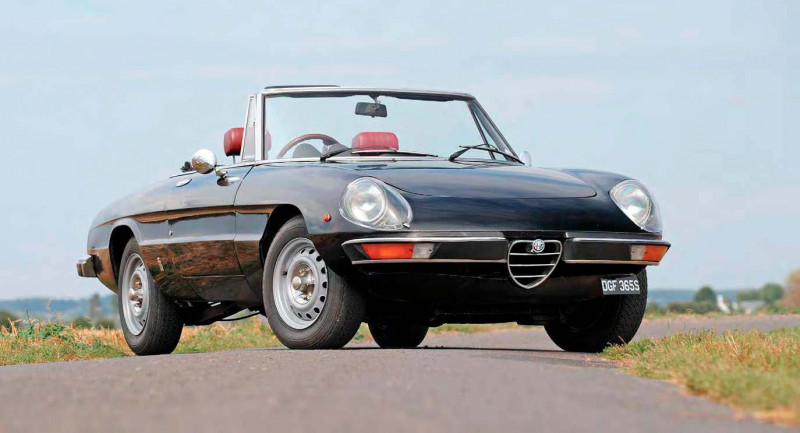
Two years ago, Jon went to a Classic Alfa Track Day in his Alfa 166. He was surprised, to say the least, when out of the blue an S-registered black Spider 2000 very much like his own pulled up next to him. He jokingly asked the driver, “Is this the legendary chassis 3052?”, which elicited a nonplussed response from the driver – who as it turned out was Simon Novis, a mechanic at Alfa specialist Ian Ellis. Not only was Simon’s car indeed chassis 3052 – precisely one number lower than Jon’s car – but he also lived fairly close by (Jon is in Kent, Simon is in Sussex – in fact, he’s the secretary of the Central Sussex section of the Alfa Romeo Owners Club).
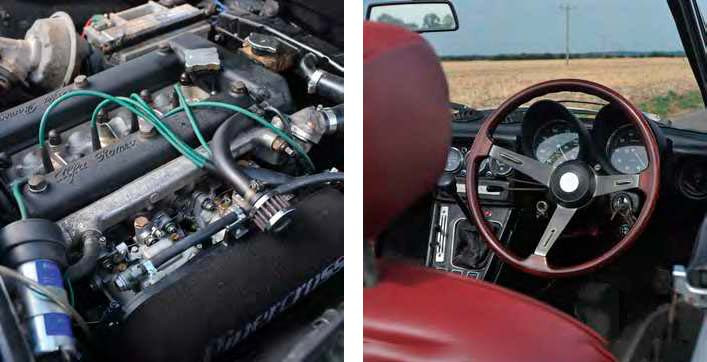
As the pair conferred, the synchronicities between their cars compounded. Both had identical colour schemes: black paint and Amaranto upholstery (a kind of dark ruby red). Jon comments: “A lot of people think black paint was not a factory colour, but it very much was.” Looking back at my book, I note that black was a ‘special request’ colour, which might explain the confusion. Black is certainly unusual for a Spider, and to see two cars with consecutive chassis numbers and exactly the same colour scheme is pretty much unheard of.

Another similarity: both cars were first registered by London dealers in 1977. Simon’s was registered on 20 August by J&B Garage of Wimbledon, while Jon’s hit the road on 11 October through MTC Cars of Westbourne Grove in west London. By the way, the price paid for Jon’s car in 1977 was £5020, and he notes wryly that when it was resold in 1979, the price had gone up to £5995!
Both cars were also Ziebarted from new, which is almost certainly why both have survived when so many other 1977 Spiders have disappeared. The rough-and-ready 1970s rust-preventing treatment doesn’t do any favours in terms of how the engine bays look; Simon tried to remove his but it simply didn’t want to come off.
Simon has owned his car for 20 years. He bought it for £5000 as the fourth owner (one previous owner having been a resident of Abbey Road in London – not a Beatle, though!). “I would say it’s probably never been restored,” Simon comments. “It’s had a few repairs, for instance to the sills, but most of the car is completely original.”
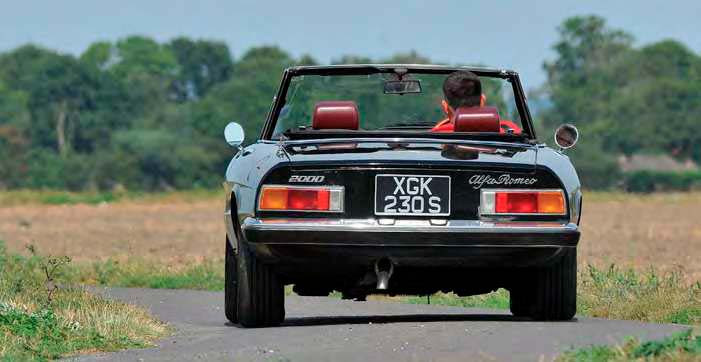
As for Jon, he bought his Spider in 2018 for £7500, the low price reflecting the fact that it had a fair bit of rust in it. “I’m the sixth owner, but there were three owners in the first 18 months and the owner prior to me had it from 1983,” he says. “The inner mudguards had gone and it needed new sills and jacking points. It’s also had new front wings, and the suspension needed sorting, as did the carbs.”
Today, both cars are very much not show queens and are genuinely used and enjoyed, which is as it should be. Jon has done 20,000 miles in four years, many of those very hard ones. He’s done a couple of Goodwood track days in it, as well as a rally in Italy called the 12in12. That was actually where I first met Jon, when I did the rally in my SZ. Annoyingly, Jon and his co-pilot son Jed beat me into second place! Jon admits he’s a very keen and very competitive driver, who just loves driving his Spider. “I like driving the Spider all year round, even in winter. The car performs better when the air is cold!”
Simon, meanwhile, uses his car every bit as much, for instance piloting it to the 100th anniversary of Alfa event in Milan. He’s another track day fan, speeding his Spider around Goodwood among other tracks. He owns a GTV 6 track day special but that’s currently laid up (he also owns two 916s and a 156 SW diesel daily driver). However, he reserves his Spider journeys for fair weather: “I only drive the Spider if I can put the roof down,” he laughs, “except once when I had an Alfa 164 daily driver that needed a new gearbox and I drove the Spider in the snow.”
These twins are not quite identical, which is mostly to do with the fact that they’ve been altered over their 45-year lifespans. Many of the differences can be found under the bonnet – in fact, even before you lift the bonnet. Both cars have 2.0-litre engines but Simon’s car sounds much rortier. The reason is that the original air box has been removed – “It doesn’t do much anyway,” says Simon. His engine has also had plenty of internal work. It’s running Colombo & Bariani 10.8 cams, high-compression cast pistons, long-branch sports exhaust manifold, ported head and lightened flywheel, although the valves are standard. It’s been dyno’d and the printouts reveal peak power of 153hp and torque of 154lb ft – a fair bit more than the standard 2000 engine’s 128hp and 132lb ft.
Both cars are running Dellorto 40 DHLA carbs, replacing original Solex carbs that were on each car when bought. Simon has experimented with Weber 45s but says they’re too peaky for the Spider, only really coming on song above 5500rpm. One other very small difference is that Jon’s car has a hand throttle, while Simon’s doesn’t – and seemingly, never did. Jon’s engine isn’t quite standard, either, having uprated camshafts to give it a little more zip – although when it was dyno’d it made less than the supposed standard outputs at 119hp and 115lb ft.
Another distinguishing feature is the wheels. Jon’s car sits on 14-inch steelies with narrow 165-section Michelin XAS tyres (sourced from Longstone). “They’re great for road and track day use,” says Jon, “but I also have a set of very rare period GKN Silverstone alloy wheels. They’ve got 185/70 R14 Pirellis on, which I’ll fit when my current set wears out. Despite being wider, the Pirellis actually make the steering feel lighter.” As for Simon’s car, that was originally fitted with 14-inch radial-fin ‘Turbina’ cast magnesium alloy wheels, which he’s still got. Why did he change them? “I love the Turbinas but I hate cleaning them. So I’ve fitted Momo Vega alloys instead, which are period correct and a common choice for 1970s Alfa Romeos.”
They’re fitted with 195/70 R14 tyres, much wider than the standard 165 section. “These tyres are fine for road use,” comments Simon, “but maybe 10mm oversized, as the steering feels heavy at low speeds. I’ve got a set of Ronal five-spoke alloys for track days which are fitted with Toyo Proxes tyres. You can really lean on those – they’re very progressive and predictable. They’re lower profile, too, dropping the centre of gravity and lowering the gearing, so they’re ideal for the track. The only thing is, the tyres show up the rest of the chassis – it could really do with upgrades in other areas!”
Simon’s car is pretty much standard in terms of suspension, except for Koni yellows up front and reds to the rear, a stiffer front anti-roll bar, and the rear anti-roll bar deleted (a common Ian Ellis modification that makes the limited-slip diff work less hard). Simon comments: “The short wheelbase really helps the handling compared to, say a Bertone GT, so it really doesn’t need stiff suspension. I like to drive at tentenths and it responds really well. On track, I drive with the roof up as it makes it 5mph faster! Of all the Alfas I own, this is the most fun. I know I’ll never sell it – it’ll go to the grave with me!”
As we say our goodbyes, we ask whether these two cars have ever actually been together in one place before. Turns out that, apart from one AROC breakfast meet in Rye, they never have. We leave with the warm, fuzzy feeling that Auto Italia has played a small part in reuniting these twins after so long. Like all those TV shows, it feels like it’s been an emotional encounter indeed.
Best of friends – both cars were probably saved by having been rust-proofed when new in 1977. Momo Vega alloys and air box delete are two of the minor differences between these near-identical twins. Jon is not afraid to drive his car hard. It took him around Europe and over the Alps last year (pic below).


